
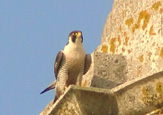
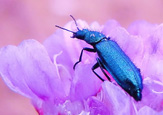
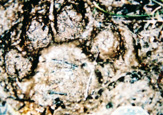
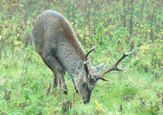
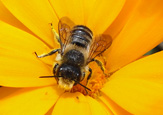
Big Cats in Britain - Page 3 of 4
Grey squirrel, edible dormouse, house mouse, brown and black rat, rabbit, brown hare, muntjack deer, Chinese water deer, sika deer, red necked wallaby, ring necked parakeet, American mink... the list could go on, but these are just some of the well known none native animals that have naturalised in Britain. Many of these have escaped from the sources named previously. Yet we take them for granted, and we do not query it.
One doesn't bat an eye lid at the fact that a deer from Japan or China is living wild in the countryside, but when we are told that a species of large cat is also then many people tend not to believe it. The simple truth is, whatever species we humans keep, and for whatever reasons, we cannot prevent them from escaping. As I have all ready mentioned many cats are kept throughout Britain and Ireland of many species. In fact three quarters of the world specie have or are presently kept here in captivity. This means that there have been and will be escapees. It is actually impossible for there not to have been many escapees of varying species of cats, especially before the law change in I976.
In the Republic of Ireland, the law did not change for decades. At the present time, animal keepers have applied for licences for dangerous wild animals from all over the British Isles. The local councils have lists of them all, not just what species are being kept, but the numbers concerned and any escapees and those that were or were not recaptured. There have been applications for licences for, lynx, caracal, snow leopard, tigers, and leopard, black and normal just to give an idea. These are just the records regarding law abiding citizens. There will be many big cats and other endangered species along with other so called 'dangerous' animals un accounted for by the authorities.
Although records regarding big cats in the UK can be traced back to the eighteenth century, it is not known as to what many of them were. Stories of black dogs abound then and before, and it could be that some of those stories tie in with big black cats. It is hard to tell in medieval times where myth ends and reality begins and vice versa. The chances are that many big cats that escaped did not make it for long and would have succumbed to the trap or gun. There was not enough living wild to form viable breeding populations, otherwise we would have known about it during the eighteen hundreds, when the study of natural history took off with a bang. But it is more than a coincidence that records started to emerge during the nineteen sixty's of mainly pumas, especially in the south west of England.
There were certainly cats seen elsewhere but were not often recorded officially. More reports are coming out now as the phenomenon gets more recognition and acceptance. During the later half of the seventy's and eighties, more reports of big black cats surface, which is not surprising, as more melanistic leopards were being kept by certain types of people . Today, there are more reports of big black cats, and the majority of them are observed to be leopards, although some observers state puma, even though they are black and the fact is that there is no official reports of black puma in captivity or in the wild, although I personally am sure that they do occur rarely. Most species of cats in the wild throw up melanistic varieties.
There is no reason to assume that the puma is an exception, although lions are, and tigers extremely rare, although with leopards and jaguars it seems that melanism is an extremely common factor. The truth is that people do not often know enough about them to make a valid identification in a lot of cases. Saying that, most people are fully aware of, and what species of cat they have seen, especially if it seems to fit the classic look and colour, of which most cases do, although there is a problem with possible hybrid looking animals or animals that do not seem to fit basic known species.
There are of course people who want to see a big cat, and so the local moggy will become one, and there are genuine mistakes, and some madness, along with one or two hoaxes, but on the whole most reports are genuine leaving the observer in shock, fear or the feeling of being privileged. The witness often seeks more information, and by looking at internet sites helps them more likely to identify the animal and of course learn about the thousands of other reports.
Page 1 | Page 2 | Page 3 | Page 4
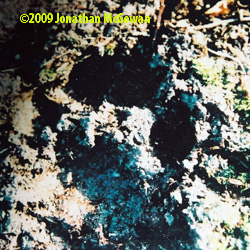
Leopard print